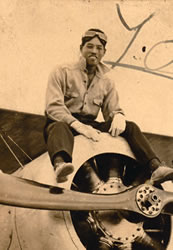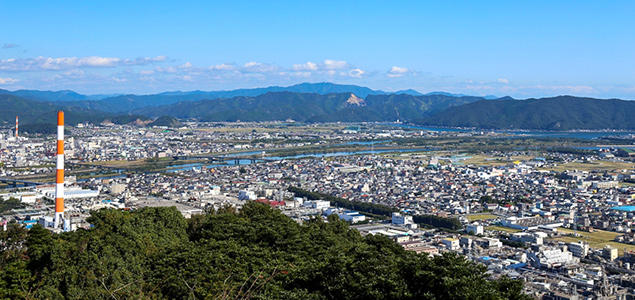本文
Myths and Stories about Nobeoka
The Seinan Rebellion - The Battle of Wadagoe
At the Wadagoe area in Nobeoka, the Satsuma army, led by Takamori Saigo, engaged in battle with the Loyalist army, led by General Aritomo Yamata. The Satsuma army, 3,000 soldiers strong, was overshadowed by the Loyalist army of 50,000 and defeated. The defeat is attributed to a shortage of resources, and the Satsuma army fled in the direction of the Kitagawa River. From there, they returned to Kagoshima through Takachiho and Mikado. Takamori Saigo and his followers committed suicide at Mount Shiroyama in Kagoshima City. Thus, the Seinan Rebellion, the last civil war in Japan, ended. It is referred to as the Great Rebellion, lasting from February to November 1877.

The Story of the Iwaguma Dam
Around 270 years ago, when the Makino family was the head of the Nobeoka domain, the land in the Idekita area was higher than the river level. Water could not be pumped to this area, making it impossible to grow rice. The wide expanse of wasteland was called the "Japanese Skylark's Nest."
The appeals of farmers in Idekita, asking feudal leaders to do something to bring water to their area, were not heard due to tight clan finances. Looking upon the situation, Chief Retainer Kenmotsu Fujie felt sorry for the people and persuaded those who were against the idea to build a dam to bring water to Idekita.
Shogunate administrator of the district Kitaemon Ejiri excelled in irrigation and engineering techniques, and was appointed to oversee of dam construction. Construction of the dam first began in the Misu area, but was swept away a number of times during flooding due to the soft ground. They then decided to build the dam at the present location of Iwaguma instead, where the ground was more firm. However, difficulties continued to arise, and Kenmotsu was criticized and told by those against building the dam to stop construction. Other chief retainers did not think highly of him, and accused him of inappropriately using war funds.
Due to these allegations, he and his three sons were sent to the Fune-no-o Prison in Hinokage. His eldest son, who was in delicate health, died after less than six months in prison. Kenmotsu, mourning his son's death, also died after refusing to eat for an extended period of time.
Following Kenmotu's last wishes, Kitaemon Ejiri took over construction of the dam. Iwaguma dam, along with a twelve-kilometer-long waterway for irrigation, were completed three years after Kenmotsu's passing. A large amount of funds were spent on their construction, spanning a total of eleven years.

After the dam's completion, the Nobeoka domain saw an increase in revenue upwards of 300 koku (ancient unit of measurement for products such as rice). Additionally, those who receive the blessings of Iwaguma Dam today honor the graves of Kenmotsu Fujie and his son, which are located in Fune-no-o, Hinokage. A large number of union members from the Iwaguma Soil Enrichment Group worship at their graves on August 17, according to the old lunar calendar.
Today, people still hold memorial services there and express their sincere gratitude to Kenmotsu. In order to not forget their moral indebtedness to Kenmotsu Fujie and Kitaemon Eijiri, the citizens of Idekita built a temple dedicated to Kannon (Goddess of Mercy) to honor the two men. A memorial service is held every year on August 18 of the old lunar calendar.
In 1924, approximately 200 years after the passing of Kenmotsu Fujie and Kitaemon Ejiri, their achievements were publicly recognized and they were awarded the title of "Jyuu-go-i" (similar to the title of "Sir" in Britain).
The Traveling Poet: Bokusui Wakayama
Nobeoka's tanka poet, Bokusui Wakayama, spent eight years of his childhood in Nobeoka starting in 1896, attending upper elementary and junior high school. It was during this time that he is thought to have developed his foundation as a tanka poet.

Shiroyama Park's Tanka Monument Inscription
There is a monument with a tanka inscription at Shiroyama Park.
Bokusui's Residence
The residence in which Bokusui lived during his junior high school years has been kept in its original condition over the years. It is currently being used as private housing.
Youth Promenade
Kyushu University of Health and Welfare features a "Youth Promenade" trail on its campus. Seventeen monuments in memory of Bokusui Wakayama inscribed with his poems can be found along this walk.

"Forefather of the Chemical Industry": Shitagau Noguchi
Shitagau Noguchi introduced the Casale design ammonia synthesis process to Japan in 1924, becoming the first person to succeed in industrializing ammonia in Japan. He used the Gokase River for hydroelectric power generation and established the Japan Nitrogenous Fertilizer Company in Nobeoka, which was the forerunner of today's Asahi Kasei Chemical Company.

Casale Design Ammonia Synthesis Equipment
Casale design ammonia synthesis equipment was the first in the world to succeed at synthesizing ammonia for practical application. It employs a manufacturing method which synthesizes ammonia using hydrogen and nitrogen as a base. This is the method that Italian scientist Dr. Luigi Casale invented. The original ammonia synthesis equipment is currently on display at the Asahi Kasei Medical Factory Plaza.
Asahi Kasei Nobeoka Exhibition Hall
The Nobeoka-based Asahi Kasei Chemical Company has developed greatly over the years into a global company. Information and various products related to the history and development of Asahi Kasei Chemical Company, as well as some its leading technology, are on display at the company's exhibition hall.
Pioneer of the Skies: Yukichi Goto
Yukichi Goto was born in Nobeoka in 1896. After graduating from junior high school, he left for Tokyo to study aeronautics and aviation, obtaining a Japanese piloting license in 1921. Following this, he successfully completed the first round-trip over Japan in 1924. However, in 1928, he died at the age of 33 in an accident while training in the mountains of Saga Prefecture, on the verge of a trans-Pacific crossing. A monument honoring Goto can be found at Shiroyama Park.






